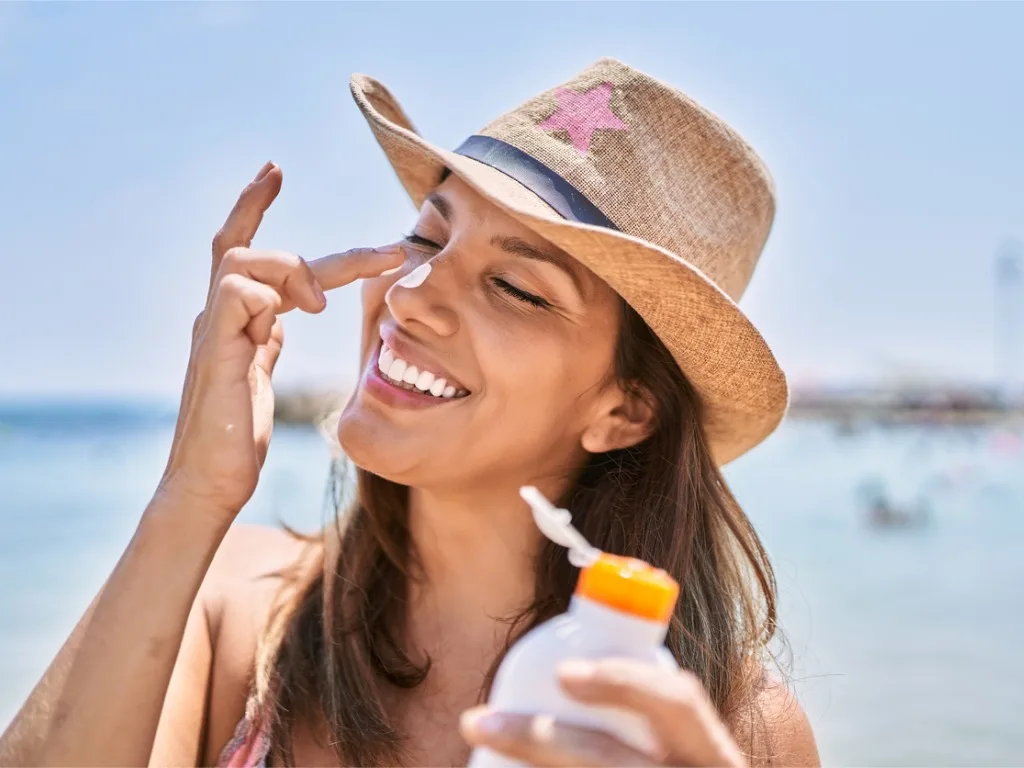Summer is a time for fun in the sun, but it’s crucial to protect your skin from harmful UV rays. Choosing the right sunscreen can be overwhelming with so many options available. That’s why we’ve compiled this comprehensive guide to help you navigate the sunscreen maze and find the perfect protection for your skin. From decoding sunscreen labels to understanding the different types of sunscreens, we’ve got you covered. If you start searching the options below, you can find the best deals for you.
Decoding Sunscreen Labels: SPF and Broad Spectrum Explained
When shopping for sunscreen, you’ll often come across terms like SPF and broad spectrum. Understanding what these labels mean is essential for selecting the right product.
SPF stands for Sun Protection Factor and measures the sunscreen’s ability to block UVB rays, which are responsible for causing sunburn. The higher the SPF, the longer you are protected from the sun. For example, an SPF 30 sunscreen allows you to stay in the sun 30 times longer without burning compared to not wearing any sunscreen.
On the other hand, broad spectrum sunscreen protects against both UVB and UVA rays. UVB rays cause immediate damage to the skin, while UVA rays penetrate deeper and contribute to long-term skin aging and skin cancer. Look for sunscreens labeled as broad spectrum for comprehensive protection.
Physical vs. Chemical Sunscreen: Which One is Right for You?
There are two main types of sunscreens: physical and chemical. Physical sunscreens work by creating a barrier on the skin’s surface, reflecting UV rays away from the skin. Common physical sunscreen ingredients include zinc oxide and titanium dioxide. These sunscreens are ideal for individuals with sensitive skin or those prone to allergies.
Chemical sunscreens, on the other hand, work by absorbing UV rays and converting them into heat. Ingredients such as oxybenzone and avobenzone can be found in chemical sunscreens. These sunscreens are often more lightweight and easier to apply but may not be suitable for sensitive skin.
Ultimately, the choice between physical and chemical sunscreen depends on your skin type and personal preferences.
Finding the Perfect Sunscreen for Your Skin Type
When selecting a sunscreen, it’s crucial to consider your skin type. Different formulations cater to various skin concerns, ensuring both protection and comfort.
If you have dry skin, opt for a sunscreen with moisturizing properties. Look for ingredients like hyaluronic acid or glycerin to keep your skin hydrated throughout the day.
Individuals with oily or acne-prone skin should choose oil-free and non-comedogenic sunscreens that won’t clog pores or trigger breakouts.
For those with sensitive skin, hypoallergenic sunscreens without fragrance or harsh chemicals are the best option.
Remember, sunscreen is for all skin types, so don’t skip this essential step in your skincare routine.
Water Resistance and Reapplication: Key Steps for Effective Protection
Sunscreen protection diminishes over time, especially when exposed to water, sweat, or excessive rubbing. To ensure continuous protection, opt for water-resistant sunscreens and follow these key steps:
- Apply sunscreen generously and evenly at least 15 minutes before sun exposure.
- Reapply every two hours, or immediately after swimming or excessive sweating.
- Don’t forget to cover often-missed areas, such as the ears, back of the neck, and tops of the feet.
By following these steps, you can enjoy your time in the sun while keeping your skin safe from harmful UV rays.
Sunscreen Safety for Infants and Teenagers: What You Need to Know
When it comes to sunscreen use, it’s important to consider specific age-related guidelines for infants and teenagers.
For infants under six months old, it’s generally recommended to keep them out of direct sunlight and dress them in protective clothing. If sun exposure is unavoidable, consult a pediatrician for appropriate sunscreen recommendations.
Teenagers, on the other hand, may be more prone to sun damage due to increased outdoor activities. Encourage them to incorporate sunscreen into their daily routine to protect their skin from harmful rays and reduce the risk of skin cancer later in life.
Sunscreen and Aging: Defying Wrinkles and Sun Damage
Did you know that up to 90% of skin aging is caused by sun exposure? Protecting your skin from the sun is key to maintaining a youthful appearance.
Regular use of sunscreen can help prevent wrinkles, fine lines, and age spots caused by UV damage. It’s essential to make sunscreen a part of your daily skincare regimen, even on overcast days, as clouds don’t block UV rays completely.
Beyond Summer: The Importance of Year-Round Sun Protection
Sun protection should not be limited to the summer months. UV rays are present year-round, even on cloudy and snowy days. Snow, sand, and water can all reflect UV rays and increase the risk of sunburn.
Shield Your Skin: Essential Tips for Sun Protection
Choosing the right sunscreen is just one piece of the puzzle when it comes to sun protection. Here are some additional tips to help shield your skin:
- Seek shade whenever possible, especially during the sun’s peak hours between 10 am and 4 pm.
- Wear sun-protective clothing, such as long-sleeved shirts, wide-brimmed hats, and sunglasses with UV protection.
- Don’t forget to protect your eyes by wearing sunglasses that block 100% of UVA and UVB rays.
- Stay hydrated by drinking plenty of water, as sun exposure can increase the risk of dehydration.
Remember, incorporating these sun protection practices into your daily routine is essential for maintaining healthy, youthful-looking skin.
Ensure that your vacation to the beach is a successful one by practicing skin safety! You’ll be glad you did!
















